MARSTEK
Couldn't load pickup availability
- 4 MPPT für 2000W PV Input
- 2560Wh/5120Wh Akkukapazität
- 800W On-grid, Plug & Play
- Anti Einspeisung,100% Selbstverbrauch durch CT
- IP65 Wasserdicht
- Betrieb bei niedrigsten -20°C

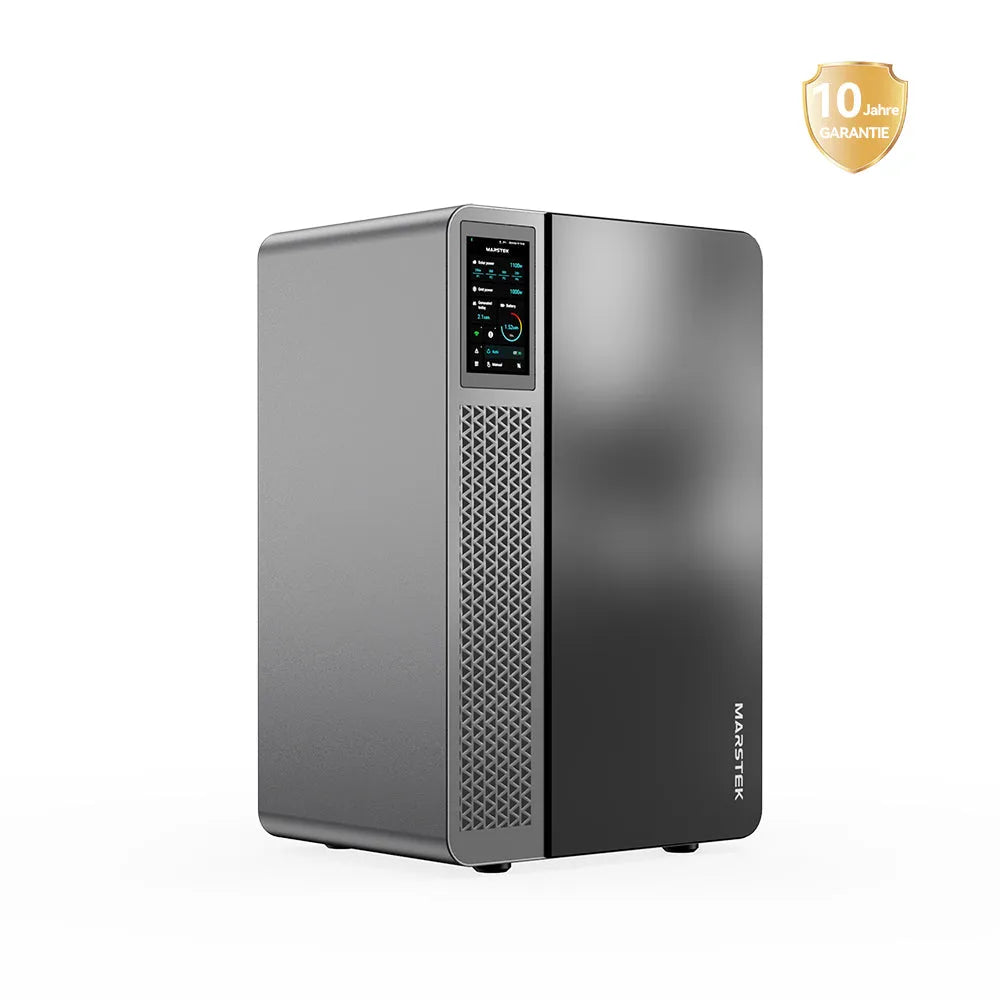
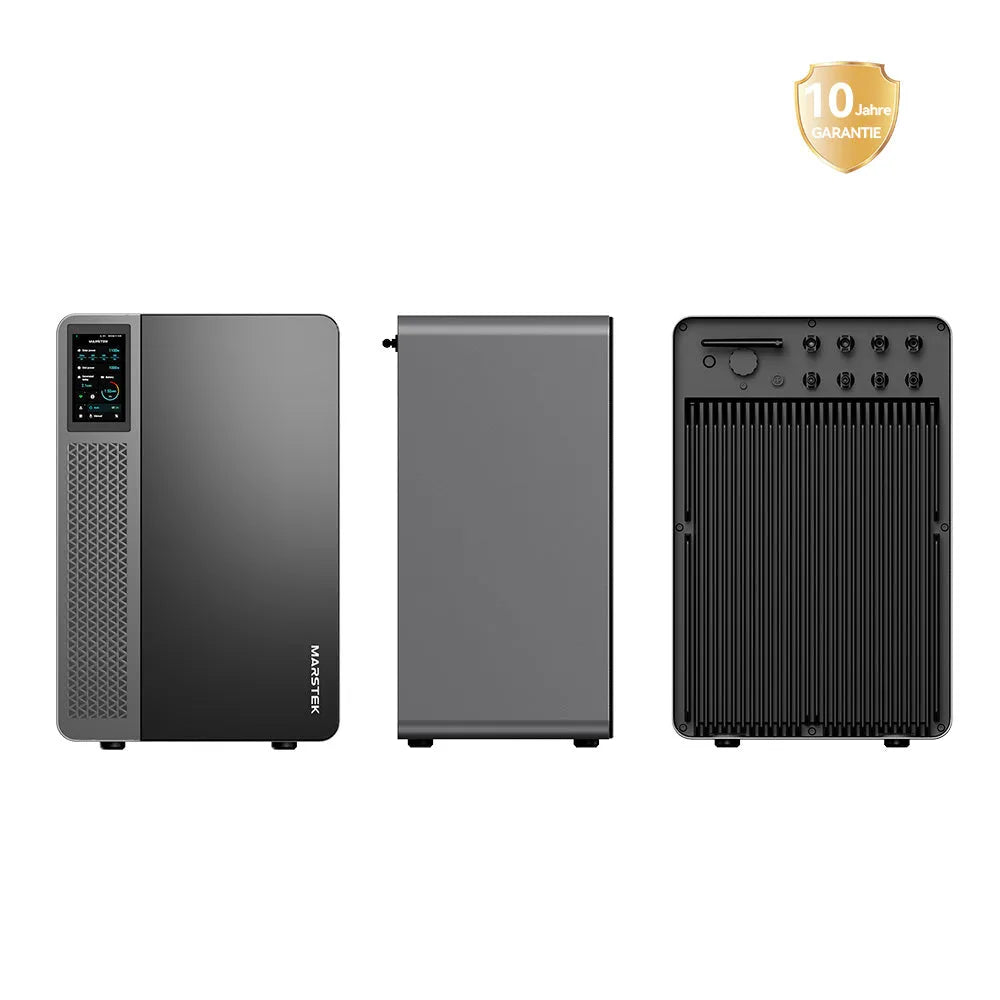



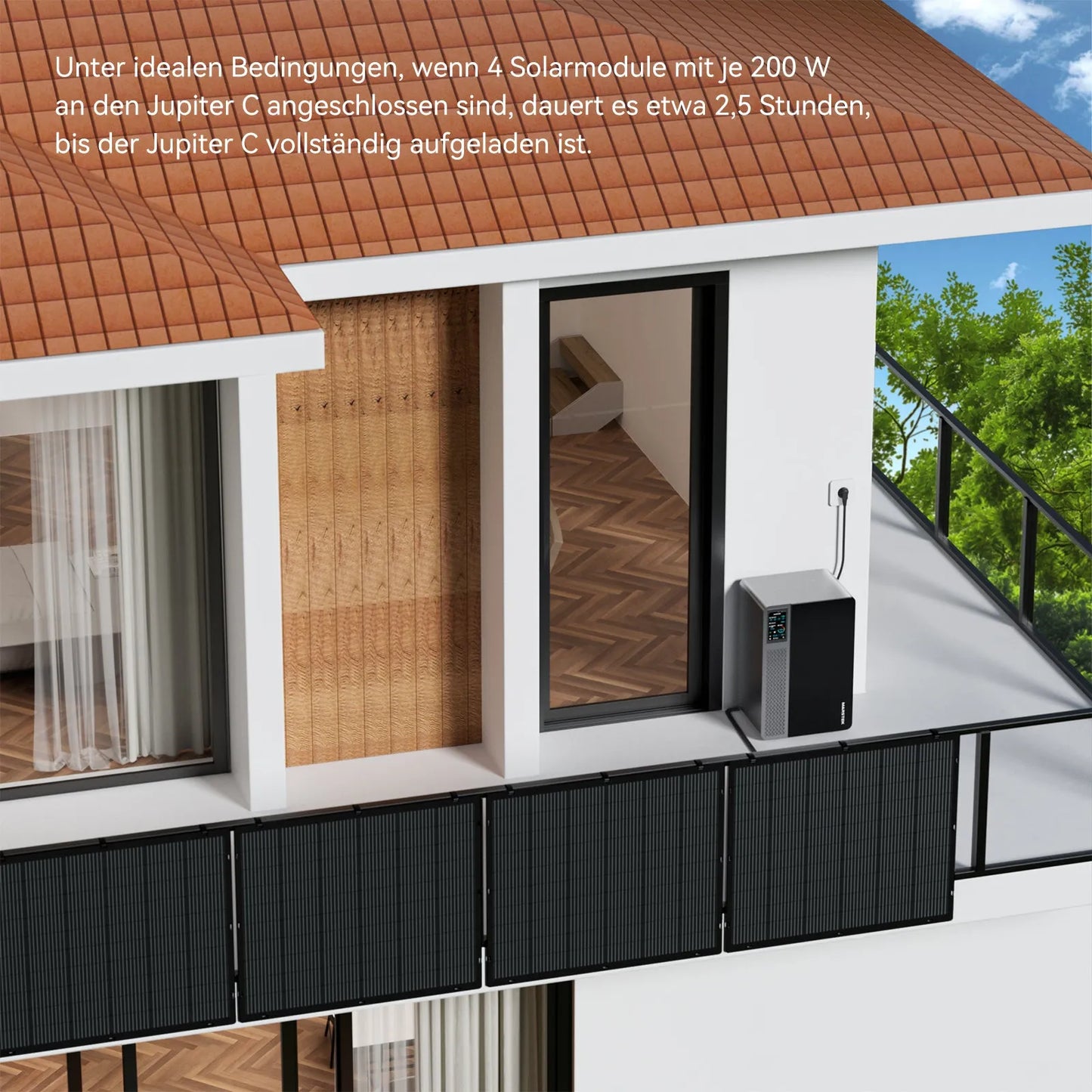

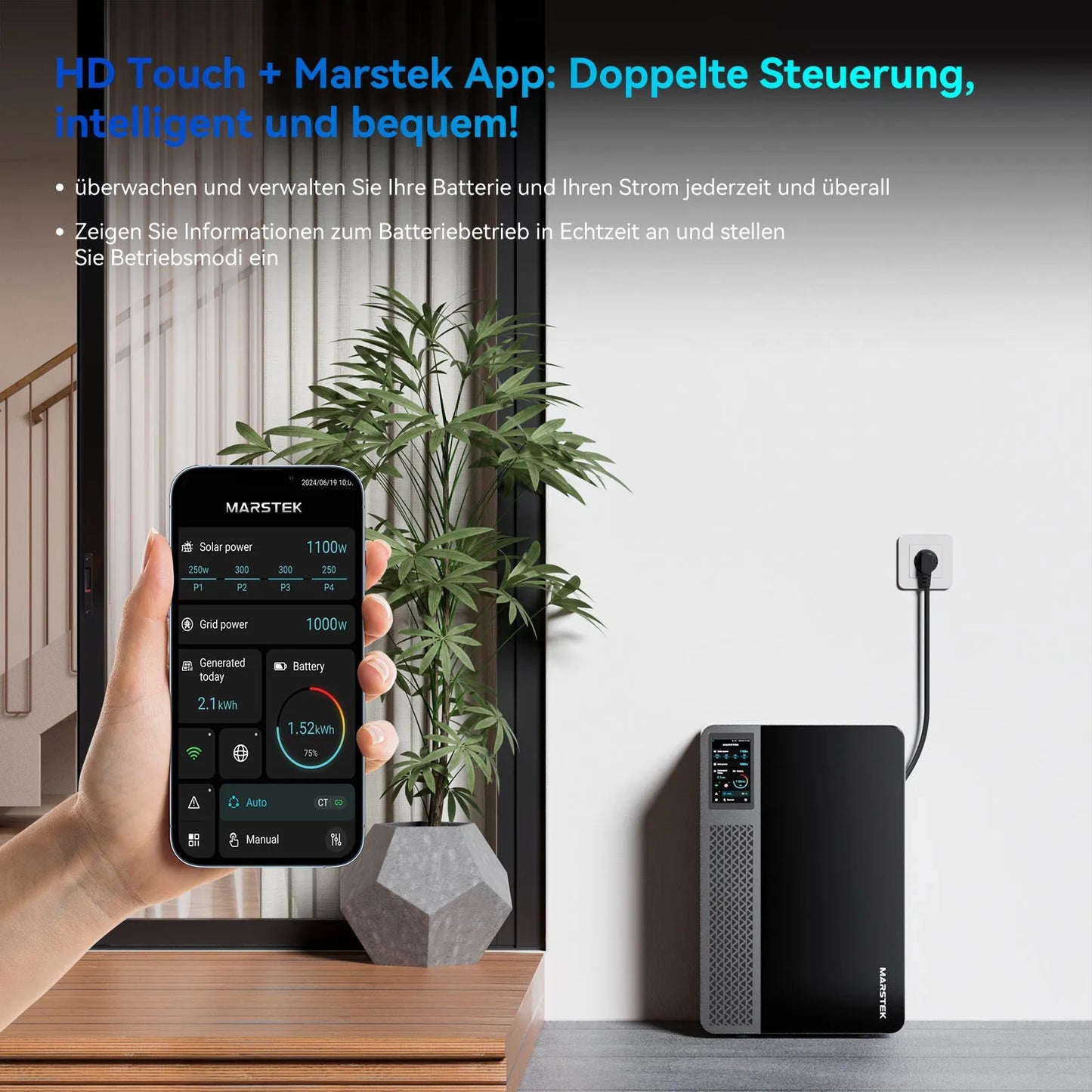





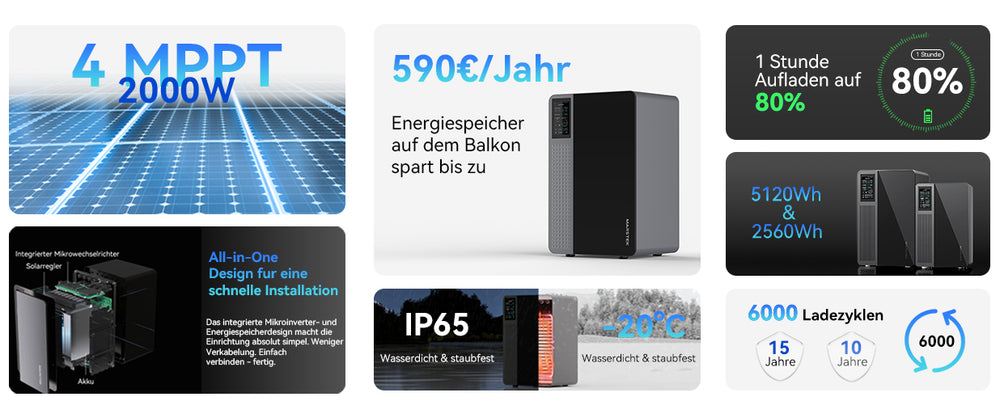

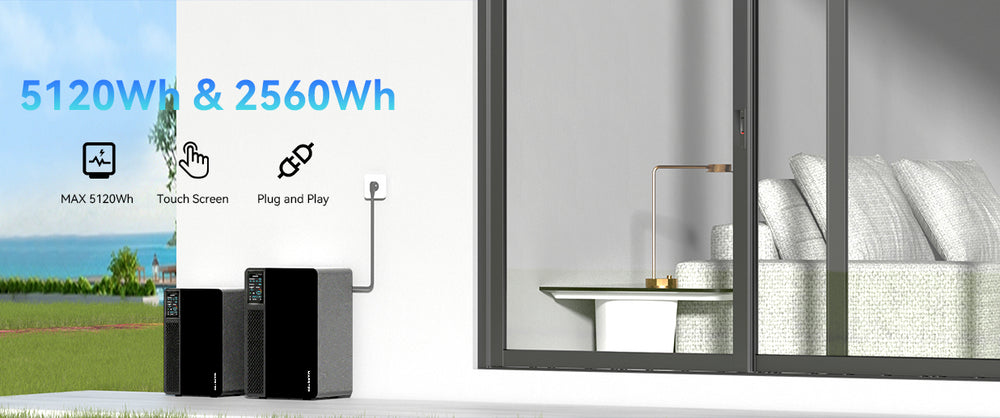



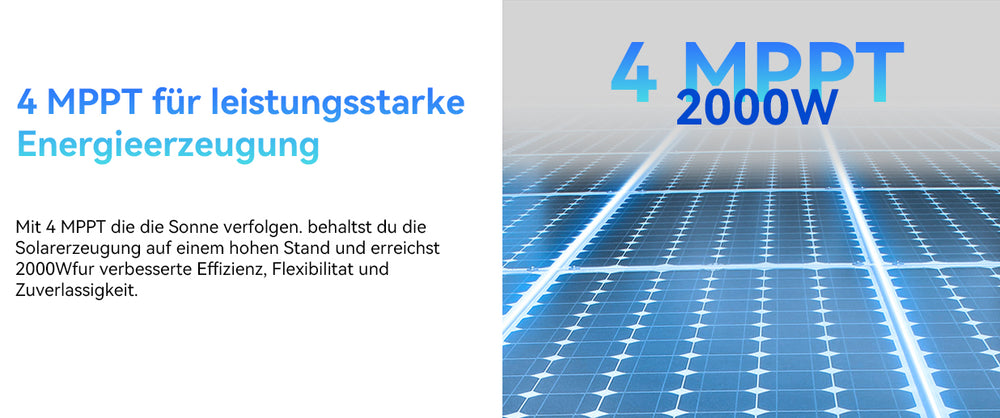

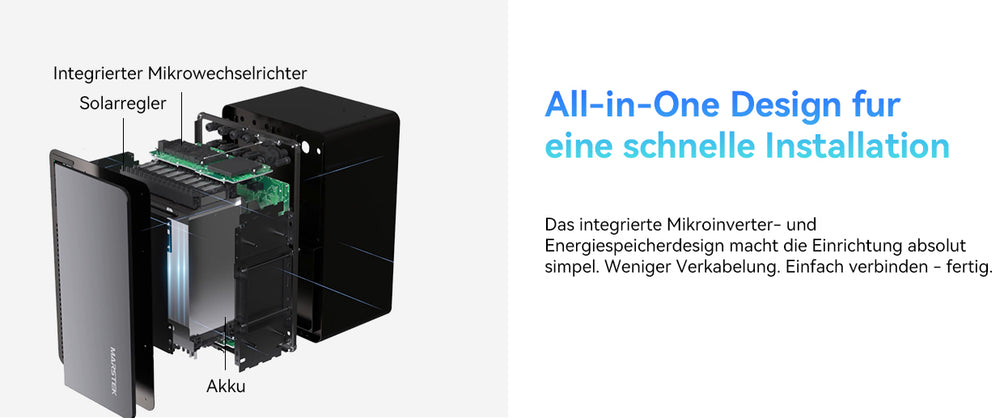

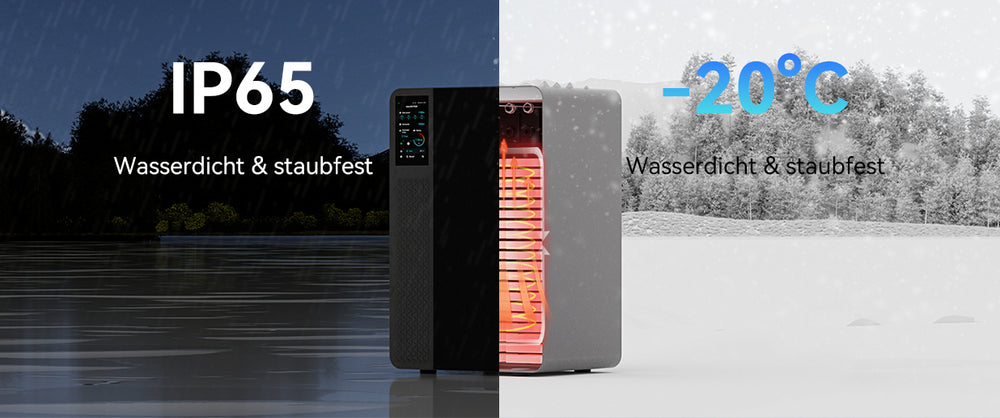
Download
Haben Sie Fragen? Wir sind hier, um zu helfen
Die häufigsten Fragen
Wie ist die Struktur des gesamten verbundenen Modells aufgebaut?
Jupiter All-in-one stores the solar energy produced by the solar panels
and feeds it into the grid via a built-in micro-inverter. The maximum
solar input power is 2000 W. On-grid power is 800 W, which can be
adjusted manually or automatically according to the smart meter.
How can I control the output of the Jupiter All-in-one?
You can set the discharge time and power manually via Jupiter's HD
touchscreen, or by adding Jupiter to the Marsrtek App. Alternatively,
you can select automatic discharge mode when paired with a smart meter,
and Jupiter will discharge according to your discharge settings, or
based on the data collected by the smart meter.
Which smart meters are compatible with Jupiter All-in-one?
Currently, Jupiter supports Marstek Smart Meter CT002 and Shelly pro
3em. If you are using a P1 meter, Marstek CT003 can be used with it for
smart power distribution.
Can the capacity of Jupiter All-in-one be expanded?
There are no extra batteries for expanding the capacity of the Jupiter.
The Jupiter is available in two capacity versions: Jupiter C has a
capacity of 2560Wh and Jupiter E has a capacity of 5120Wh. You can buy
them on demand.
What things should I be aware of when using Jupiter All-in-one in winter?
At
low temperatures, the activity of the lithium battery decreases, which
can easily lead to rapid and high power consumption of the battery.
Therefore, attention should be paid to the use of batteries in winter:
(1) In winter, it is recommended to reserve at least 30% or 50% of the
battery power to avoid low battery power. Especially in snowy weather,
it is recommended to maintain 70% of the battery capacity to ensure that
the battery has sufficient reserves.
(2) If the battery has not been charged for more than a week, it is
recommended to pause discharging until the battery is charged to more
than 90% before switching on discharging.
(3) Avoid discharging with high power. PV is weaker in winter and
charging is more difficult. If the device is discharged at high power,
this can easily lead to the battery having low power for a longer period
of time.
(4) Regularly check whether the PV panels can supply power normally.
Especially after heavy snowfall, the PV panels are easily blocked by
snow and cannot charge the battery for a long time.










